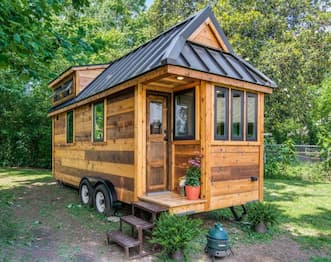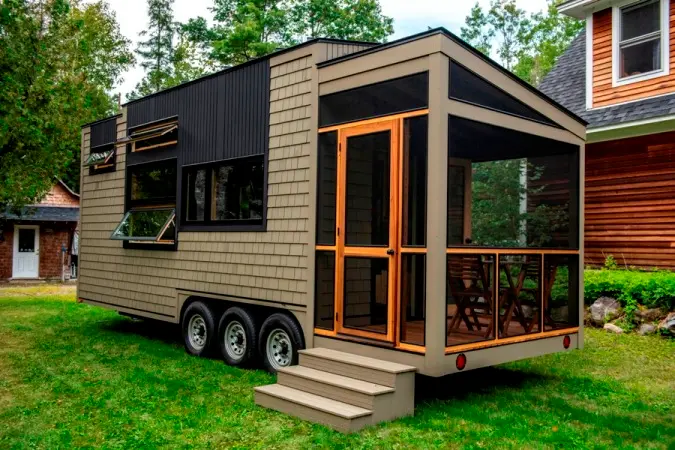The Ultimate Guide to Small Space Living: Strategies for Maximizing Every Square Foot
Living in a smaller space opens the doors for many creative and innovative solutions, yet many mistakenly assume they must sacrifice style for functionality; that doesn’t have to be true if smart design choices help maximize every square inch for optimal effect in their cramped home environment.
Individuals looking to maximize space should utilize various strategies that enhance their living environment, including selecting suitable furniture, clearing away clutter from pathways and using colors and textures that create an airy feeling as well as employing effective organizing techniques which transform even smaller rooms into pleasant living environments.
Living compact requires individuals to develop an adaptable and resourceful mindset. Through various layout ideas and decorating techniques, individuals can personalize their spaces for specific tasks while making every inch count towards something tangible. An optimistic perspective and developing appropriate mindset are also vital aspects of successful living compact lifestyle experiences as they provide enriching lifestyle experiences alike.
Fundamentals of Small Space Living
Making the most out of living in small spaces involves devising intelligent plans to optimize each corner and corner-wise strategies are key components. Focus on space efficiency, furniture selection and placement and creative storage solutions as areas to optimize.

Understanding Space Efficiency
Maximizing space efficiency involves more than just fitting furniture into a room. It requires a thoughtful approach to layout and movement.
- Clear Pathways: Ensure there are clear pathways to avoid a cluttered feel. Aim for at least 2-3 feet of space between important furniture pieces.
- Light and Mirrors: Use mirrors and light colors to create an illusion of more space. Mirrors reflect light and can visually expand the room.
- Multipurpose Rooms: Consider how rooms can serve multiple functions. For instance, a living room can double as an office space with the right furniture.
Furniture Selection and Placement
Choosing the right furniture and arranging it wisely can significantly impact the space.
- Size Matters: Select furniture that fits the scale of the room. Avoid oversized pieces that can make a space feel cramped.
- Wall Placement: Place seating against walls to open up the center of the room. This creates a more spacious feel and allows better movement.
- Dual-purpose Options: Look for furniture that serves more than one purpose. Sofas that convert into beds or ottomans that double as storage help maximize utility.
Storage Solutions and Organization
Effective storage can help keep small spaces tidy and functional.
- Vertical Space: Use vertical storage options like shelves or hooks. This draws the eye upward and frees up floor space.
- Under Furniture Storage: Utilize space under beds and sofas. Bins or drawers can hold seasonal items or other less-frequently used belongings.
- Organizers: Invest in organizers for closets and cabinets. These can help categorize items and make the best use of available space.
Implementing these fundamentals can transform any small area into a functional and stylish living environment.
Design and Decor for Small Spaces
Create an inviting and functional small space requires careful design decisions, from choosing colors that complement one another and taking advantage of effective lighting to choosing multifunctional furniture pieces that serve multiple functions – this strategy can transform compact areas into stylish yet practical living environments.
Color Schemes and Visual Tricks
Color can have an incredible effect on how a small space feels, from making the room appear larger to creating cozy atmospheres in dark colors that might even shrink it a little more. When selectinging your colors carefully for small rooms, choosing just the right hues can have dramatic results on how they’ll appear to you – light hues such as soft whites, creams and pastels may open it up while dark hues might shrink it further down.
Vertical lines in decor or wallpaper can help draw the eye upward, giving the impression of more height to any space. Mirrors also add visual depth by reflecting light back into a room and giving an illusion of more space; strategically arranged mirrors can even serve as decorative features while increasing light levels.
Lighting and Reflection
Lighting in small spaces is of the utmost importance, particularly to make them seem larger and inviting. A combination of ambient, task and accent lighting can transform a room from cramped and confining into more open and welcoming environment. Overhead lights, floor lamps and wall sconces all help provide ample illumination across an area.
Natural light can be an invaluable asset. Utilizing sheer curtains allows sunlight to enter while still offering privacy; reflective surfaces like glass and metallic finishes can amp up brightness for an airy atmosphere; warm-toned bulbs help soften shadows for an inviting ambience.
Multipurpose and Transforming Furniture
Picking furniture that can serve multiple functions when decorating small spaces is of great importance; items like sofa beds, ottomans with storage capabilities and folding tables help maximize utility while not compromising style. Such pieces help maximize use of available space while fulfilling various requirements and accommodating changing lifestyles.
Look for furniture that’s lightweight and easily moveable; this allows rearranging to suit different activities more readily. Additionally, nesting tables or expandable dining sets provide extra surface area when necessary, yet can easily fold away when not required – all great pieces to help small areas feel organized and functional!

